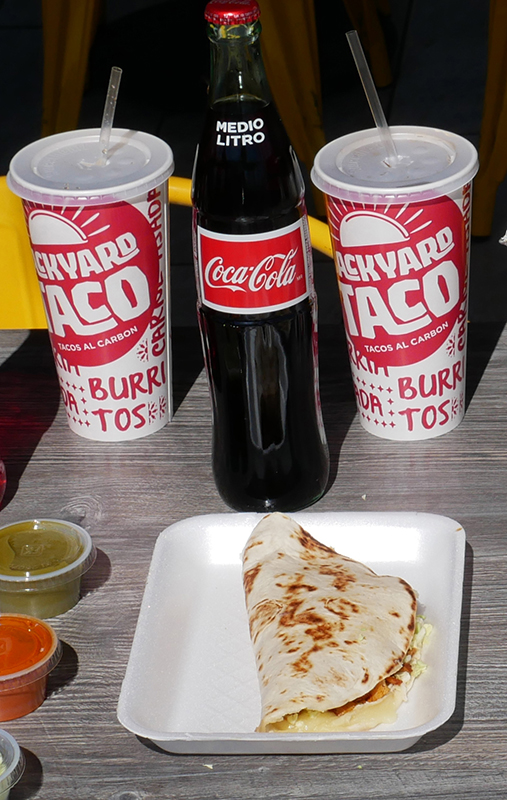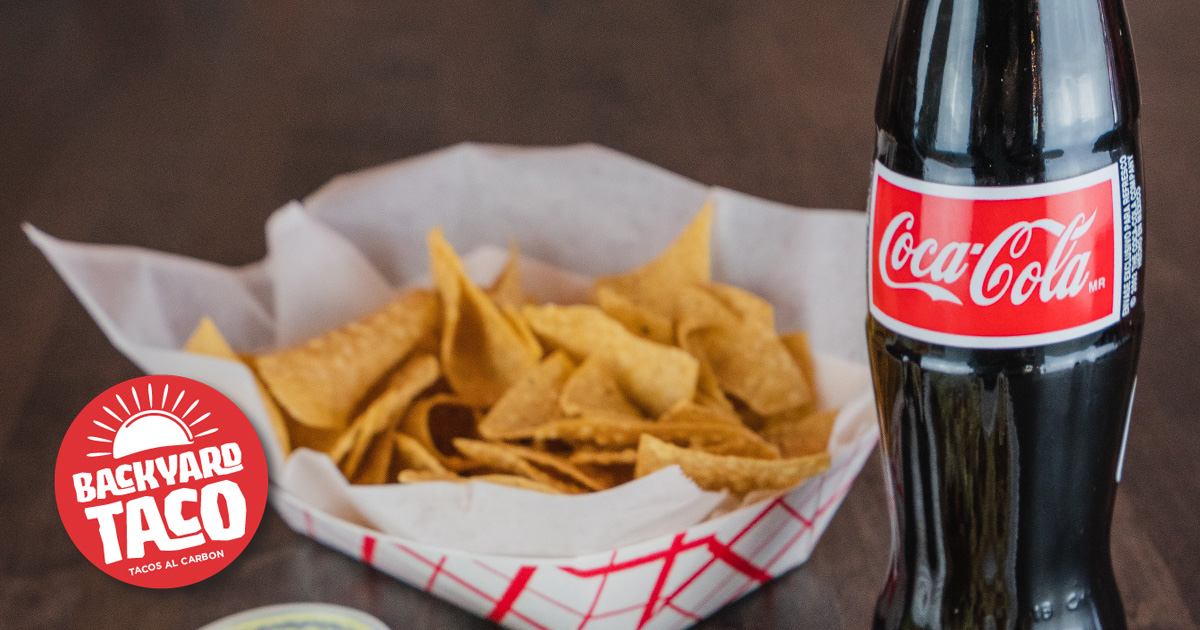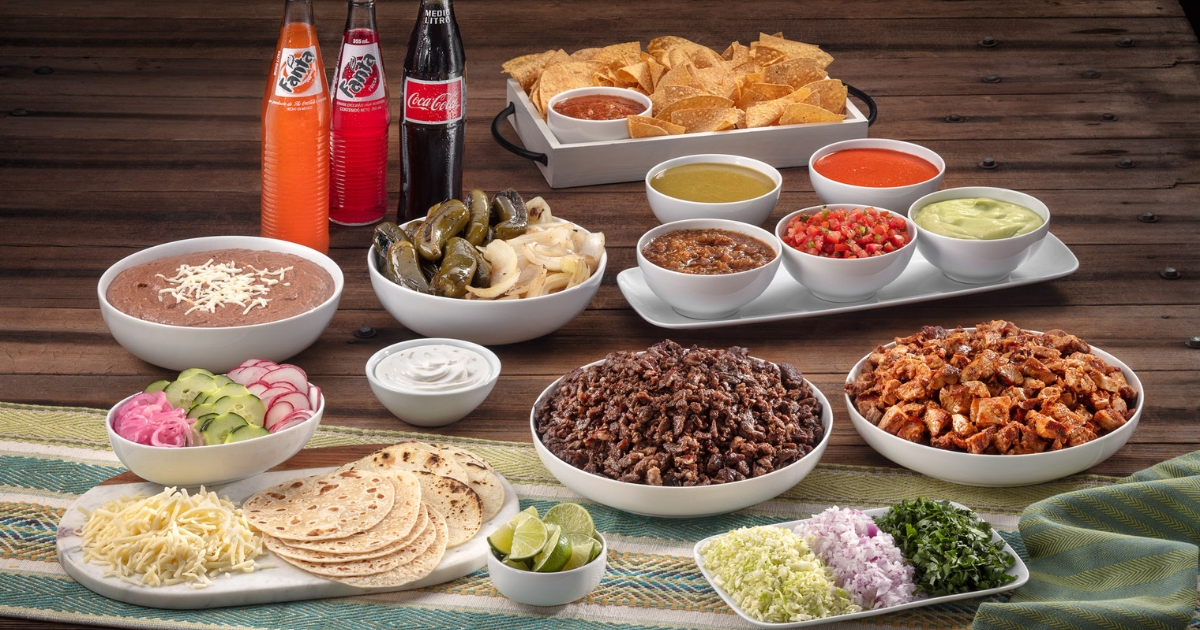If you’ve ever noticed the 12 oz. glass Coke bottles in your local bodega or grocery store, you may have wondered what made them any different from the plastic 16oz or 2-liter versions of the Coca-Cola product further down the aisle. This line of Coke products is produced in Mexico and was originally imported into the U.S. to appeal to Mexican immigrants who were more familiar with that formula of the iconic soft drink.
Originally produced for consumers in Mexico, this version of the Coke product is now extremely popular in the United States and available at large chain grocery stores all across the country. There is definitely something about Mexican Coke that sets it apart from the United States version of the Coca-Cola product, but what exactly is the reason behind its popularity?
What Is Special About Mexican Coke?
 Is it an elusive secret ingredient, the uniquely shaped glass bottles, or is it that Mexican Coke just tastes better because of its ties to ethical consumption?
Is it an elusive secret ingredient, the uniquely shaped glass bottles, or is it that Mexican Coke just tastes better because of its ties to ethical consumption?
For many, it simply tastes better. Many Coca-Cola fans believe that Mexican Coke tastes more “natural” than its American cousin. This difference in taste is due to the fact that American-made Coke switched over to using high fructose corn syrup as a sweetening agent in 1980. Mexican Coke continued using cane sugar to sweeten its version.
Another noticeable difference between the two products is the container. In 1978, Coke introduced the first 2-liter plastic bottle and soon began offering all of their products in various sizes of plastic containers. Mexican Coke continues to be sold in the classic contour-shaped glass bottles. For a large number of Coca-Cola fans, it’s the bottle that draws them to this version. It may be because things taste better in glass, or it may be a nostalgia factor.
A third factor that motivates some consumers to choose Mexican Coke over the U.S. version is their belief that consuming Mexican Coke is a more ethical choice, supporting the will of smaller businesses over worldwide conglomerates. The politicization of the brand is nothing new, and tying Mexican Coke to anti-globalization may just be another evolution.
Cane Sugar vs. High Fructose Corn Syrup
 The main difference in ingredients between the two products is the sweetener. Coca-Cola allows independent local bottlers some leeway in the type of sweeteners they use, as long as the rest of the recipe remains intact. Mexican Coke is made using cane sugar as the sweetener, and the version typically sold in the United States uses high fructose corn syrup as the sweetening agent.
The main difference in ingredients between the two products is the sweetener. Coca-Cola allows independent local bottlers some leeway in the type of sweeteners they use, as long as the rest of the recipe remains intact. Mexican Coke is made using cane sugar as the sweetener, and the version typically sold in the United States uses high fructose corn syrup as the sweetening agent.
As far as calorie content, both types of sweeteners have the same number of calories in a gram-for-gram comparison, and contrary to what many people think, cane sugar is not necessarily healthier than high-fructose corn syrup. When it comes to taste, many Coke drinkers believe cane sugar has a more natural sugar taste compared to high fructose corn syrup, which can taste more artificial and chemical-like due to the extra processing.
In 2013, Arca Continental SAB, the Mexican Coke bottler, mentioned that it was considering a switch to high fructose corn syrup in an effort to save money. This was in response to a Mexican government levy of 8 cents a liter on all soft drinks to curb consumption of soft drinks. Mexicans drink more Coca-Cola products than any other country in the world. The outrage expressed by fans of the soda was enough to quickly change the mind of the company.
The Glass Coke Bottle
 One of the unique things about Mexican Coke is its container. The soda is sold in a thick glass bottle. You can find it in either 12 U.S. fluid ounce size or 17 U.S. fluid ounce glass bottles. Many people find that beverages taste better out of a glass container rather than a plastic one or an aluminum can. The glass container likely contributes to the reason so many people think Mexican Coke “just tastes better.”
One of the unique things about Mexican Coke is its container. The soda is sold in a thick glass bottle. You can find it in either 12 U.S. fluid ounce size or 17 U.S. fluid ounce glass bottles. Many people find that beverages taste better out of a glass container rather than a plastic one or an aluminum can. The glass container likely contributes to the reason so many people think Mexican Coke “just tastes better.”
Another factor in consumers’ preference for the packaging of Mexican Coke likely ties into nostalgia. Coca-Cola is widely known for using nostalgic tie-ins for its brand. Think ET. Many people describe the contour-shaped glass bottles as having a pleasing nostalgic shape to them. Mexican Coca-Cola glass bottles require a bottle opener to enjoy the containers’ delicious, refreshing contents. This added bit of nostalgia, combined with the contour bottle shape, helps to connect many soda drinkers with their younger, more carefree lives. It also helps to give a better seal to the contents, which means more bubbles.
Interesting fact: many people believe that the bottle’s shape was modeled after a woman’s body. In fact, the design was based on the shape of a cocoa pod.
Ethical Consumption Product
Some people choose to drink Mexican Coke based on their particular ideology. These consumers see choosing the drink as a statement of solidarity, supporting local factory voices versus international ones. These consumers view cane sugar as a more responsible alternative to the large-scale use of high fructose corn syrup. They also see choosing the Mexican Coke version of the soda as being anti-globalization and anti-brand.
Coca-Cola’s first Mexico bottling franchise opened in 1921 with Grupo Tampico. Currently, FEMSA is the largest Coca-Cola bottler in Mexico. The governments of Mexico and the United States have been involved in a decades-long sugar trade war. The Mexican government has twice tried to implement a tax on high fructose corn syrup the U.S. was importing into Mexico in an effort to support its local cane sugar farmers. Both times, the World Trade Organization ruled in favor of the United States. For ideologically driven consumers, Mexican Coke not only tastes better than the U.S. version, but they also feel better about their purchase.
Does Mexican Coke Really Taste Different from Coke Produced in the U.S.?
Many consumers feel that Mexican Coke tastes better than the Coke product produced in the United States using high fructose corn syrup, and they are willing to pay more money to have a better product. This devoted group of Coke drinkers is more than happy to pay the higher price that Mexican Coke purchased on this side of the border commands.
If you go by taste tests, the results are mixed. In side-by-side blind tests, some tasters found that Mexican Coke had a more complex flavor and an herbal spicy note, while others said that it contained a similar note to sarsaparilla or old-fashioned root beer. Some soda drinkers describe the Mexican Coke as being crisp with more fizz. This may be due to the different types of containers. However, participants in Coca-Cola-sponsored taste tests are reported to have found no real distinguishable difference in taste between the two products.
Why Mexican Coke Is Better

Mexican Coke vs. U.S. Coke is an ongoing battle, and those that feel strongly about the difference, real or unreal, are helping to keep Mexican Coke stocked on the shelves of major grocery chains like Costco, Kroger’s, and Walmart, to name just a few. In the end, it really does come down to taste. Mexican Coke uses natural cane sugar, and even if it has the same number of calories and really isn’t healthier than high fructose corn syrup — it just tastes better! Plus, it comes in those perfect small glass bottles. Sometimes things really do taste better out of a glass bottle than from a plastic or aluminum container. And, taste really is all that matters.
Taste the Difference!
Cola that is hecho en México just tastes better. But you don’t just have to take our word for it, come try one for yourself! Backyard Taco has all of your favorite beverages, including Mexican sodas. Come by and taste the difference for yourself!
Dr. Tyler loves tacos! He is one of the owners of Backyard Taco, and can sometimes be found moonlighting there at night or on the weekends.
Dr. Tyler Robison is an alum of Mesa’s Mountain View High School. He graduted from Brigham Young University before being accepted to the “Top Ten-nationally ranked” University of Louisville in Kentucky, where he earned his Doctorate in Dental Medicine and a Master’s Degree in Oral Biology. He graduated with honors in the top ten percent of his class. Dr. Robison continued at the University of the Pacific in San Francisco, where he received a second master’s degree in dental science and his orthodontic certification.
Dr. Tyler enjoys serving in his community. He is a provider for the Smile Back Foundation, which offers scholarships for free dental treatment to underprivileged East Valley students. He is also a Major in the U.S. Army Reserve and served during Operation Enduring Freedom in 2008.
Dr. Tyler Robison’s favorite pastimes include spending time with his family on the lake, at the beach, or on the slopes. He is an avid and crazy snowboarder! He has three incredible sons and one sweet daughter: Caden, Jace, Crew, and Bliss.






